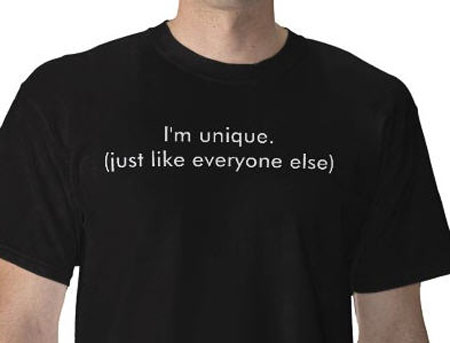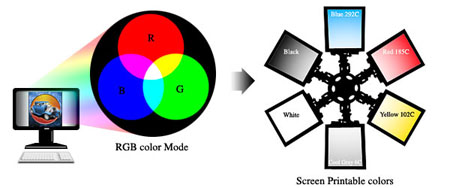Great t-shirt design doesn’t just happen, it is cultivated. It takes time and effort to create a masterpiece that can withstand the competition in a very crowded marketplace. Just having a good idea won’t cut it anymore with the amount of options that consumers are faced with when making a purchase.
There are tried and true methods that you can take to create a great t-shirt design. Some of these tips come before the actual designing process but are equally as important as the design work itself. All steps involved require a good bit of effort and practice but once refined, designing your own t-shirts will reach new levels.
Tip #1: Get Inspired!

It may seem all too obvious, but a design that lacks inspiration is destined for failure. Do your research and seek out the trends and styles that really speak to your core. You will be able to find out things about yourself introspectively if you notice a pattern in the designs you gravitate to. This recognized pattern will help you define the look and feel that your design can become.
Keep in mind that inspiration can come from many different mediums. It doesn’t just have to be the work of other t-shirt designers but can be derived from print design, web design, or even non-visual media such as music.
Along with checking out other forms of media, remember to check out a variety of styles. Very often the best ideas occur when something new and different meets something comfortable and familiar. For example you may have already identified that you tend to enjoy designs that relate to various aspects of pop culture and you may also be aware that you don’t ordinarily enjoy designs that involve zombies or monsters, yet nevertheless it’s definitely worth giving the zombie/monster genre a good look through.
Tip #2: Find Your Style

Knowing what t-shirt design styles you like and finding inspiration in those designs is a major first step toward creating quality artwork. However, the other half of the equation is knowing your own style and playing toward your own particular strengths. It is completely unacceptable to bite someone else’s style but even if it weren’t, it would not be as valuable and useful as forging your own creative path. Nevertheless finding one’s artistic voice can be difficult and very often the best thing you can do is simply to try something and see if it works. If it does, great! If it doesn’t no harm done, take it as a learning process and move forward.
After you have a first draft of your design ready to go don’t simply accept it as is and call it a day. Instead, try experimenting with multiple different concepts. During the early brainstorming and design phases you probably had several slightly, or even radically different ideas about how to move forward. Try blending some of those concepts into your first draft. Perhaps even try going in a completely new direction with the design. Your goal at this point should be to experiment with as many different styles and concepts as you can to end up with multiple different finished versions.
Now that you have several different designs to choose from you can compare them side by side and pick the one that works the best for you. Don’t simply junk the others though. Instead take a minute to identify what worked in each design and what what didn’t work, that way you’ll have even more information about your strengths and weaknesses for the next time. As always, invite other people’s feedback for this step. It’s amazing how big of a difference it can make to have someone with a fresh perspective give their insights and opinions on the design.
Tip #3: Know Your Medium
One of the most frustrating things any t-shirt designer can face is to have created an awesome design that took a great deal of time and effort and then to be told in the final step that it isn’t suitable for print. This problem actually comes up a great deal more often than many people might imagine, especially if the t-shirt designer is new to t-shirt design and is instead coming from a different design background. In most cases the main problem in this type of scenario is that the t-shirt designer has lost site of, or never properly understood, the t-shirt as the design medium.

There is a big difference between what looks great on a computer screen or on a printed page, versus what looks good on actual fabric. This is obvious for several reasons. One being that the surface itself is different and it will absorb the ink and colors differently. Another example being taking elements of a design such as photographs and mixing them with other elements with gradients….this can really muddy up a print without the right contrast and separations. Of course there are many other reasons why a design might not be ideal for printing, including technical aspects relating to the capabilities and cost of print, but we’ll review those in a bit.
Another important consideration is where the design will fall on the t-shirt and thus the wearer. Do you want the design front and center on the wearer’s chest or might it have a more desired impact on the wearer’s side, back, or sleeve? It can be very helpful to experiment with different placements and while it might not be realistic to get printed samples due to cost and production time, it is often helpful to simply experiment with different placements on electronic mock ups and/or to measure out the size and placement on an actual t-shirt to get a feel for the general positioning and proportions.
Tip #4: Know the Printing Limitations

Tip number four is very similar to tip number three except that it relates more to the actual technical aspects of the printing rather than the aesthetic qualities. Nevertheless, the technical considerations are hugely important to producing a high quality printed t-shirt. Again there can be few things as frustrating to a t-shirt designer as being told that their design simply can’t print at the same level of quality as the design.
One thing that many designers may want in their design which could create problems for printing is full range of colors, designs with a blending of color, or simply designs that have a high unique number of ink colors. The reason that this can create problems for printing is that the typical, best quality method of t-shirt printing is a process called screen printing. Screen printing employs the use of screens to imprint the shirts and each specific ink color corresponds to a screen. Thus, typically a solid, single ink color is needed for the design rather than a color which blends into another color or which fades from a darker to a lighter shade. When gradients and photograph-like elements are used in a design, the printer usually has to incorporate 4-color process printing making the end result less likely to be exactly as the original.
One more consideration when working with screen printers is to send your design over for printing in their preferred format. Different printers may prefer different file types and formats but in general it is better to send over a vectored version of your design whenever applicable. When a vectored version is not possible, then designing in a high resolution such as 300-600 dpi is the optimal way to go. It is also very helpful to assign specific PMS colors to your design and to send over the design in the dimensions that you want it to be printed in. For those unfamiliar with PMS colors, the term refers to the Pantone Matching System which is the industry standard for printing and it involves picking the exact color value that you want for your ink color so that there is no guesswork or subjectivity involved with picking the correct shade of an ink color.
Tip #5: Know Your Audience

One of the sometimes harsh realities of great t-shirt design is that it is largely subjective. Even a design which is considered excellent by the majority of “experts” in the t-shirt design industry is still subject to the whims and preferences of the particular customers who will be buying the t-shirt. You will want to produce the best quality design possible and remain true to your artistic vision; however, if you want to sell any t-shirts, or even get a company to print and promote your design in the first place, then you will need to make sure it has appeal to your target audience as well.
Naturally the first step in all of this is to know your audience. In general you will want to identify your target demographic and make sure that you are aware of such basic information as age range, gender, and general style preferences. In an ideal world your design will be so good that everyone will want to buy it regardless of who they are, yet you will probably find that is not the case. A good strategy is to check out designs that are being sold and seem to be selling well on other websites. Another good approach is to investigate what you see on the shelves and racks at retail stores. Of course you won’t want to copy anything exactly, but using these sources as another form of inspiration can help ensure that you are at least pitching your design in the right ballpark.





Great Tips for selecting T-Shirt print designs in this changing and growing environment